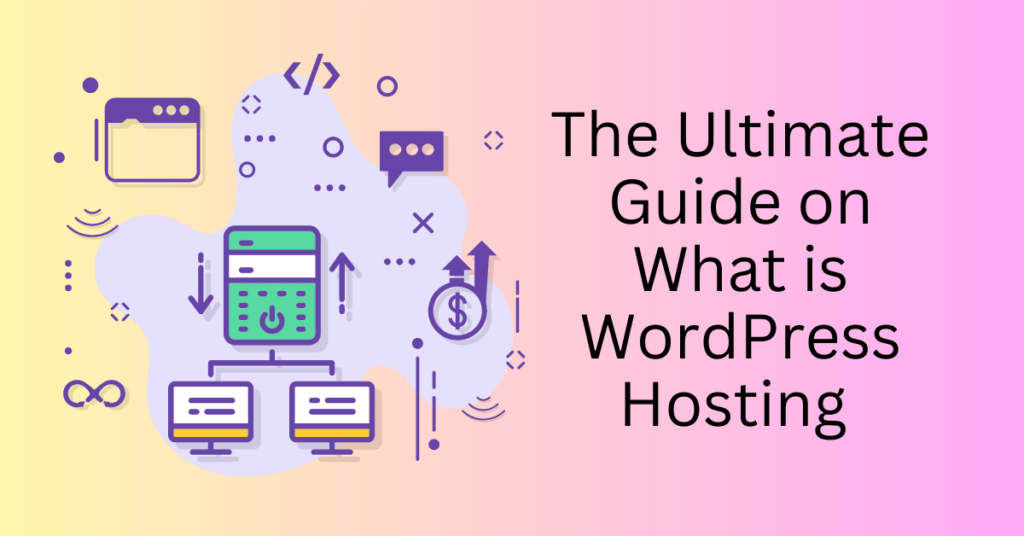Now that you have a blog, you need to grow it by directing traffic to it. There are so many blogs out there. A blog will never be found if you don’t promote it. So, let’s explore how to grow your blog to reach more audiences.
This is why you need to have the strategies to grow your blog. And today, we are sharing some useful ways to grow your blog.
Read more about how to start a profitable blog
1. Define your target audience – How To Grow Blog

Defining your target audience is an important aspect of growing your blog. By understanding your target audience in detail, you can create content that resonates with them. Here are some tips on how to define your target audience:
Identify your niche
The first step in defining your target audience is to identify your niche. Your niche is the specific topic or focus of your blog. It’s important to choose a niche that you are passionate about and have expertise in. This will make it easier for you to come up with ideas for content. And grow yourself as a thought leader in your field.
Consider your goals – How to grow your blog
It’s important to consider your goals when defining your target audience. Do you want to attract a broad audience or a specific group of readers? Are you looking to monetize your blog or simply share your knowledge and expertise? Your goals will help to shape your target audience.
Research your audience
Once you have identified your niche and goals, the next step is to research your audience. Look at data from Google Analytics or other tools to see who is visiting your blog. And then, from their behaviour, you can analyze what they are interested in. You can also use surveys or focus groups to gather more detailed information about your audience.
Create buyer personas
A buyer persona is a fictional representation of your ideal reader. By creating buyer personas, you can get a better understanding of your target audience. Also, you can tailor your content and marketing efforts to meet their needs and interests.
Test and refine
Defining your target audience is not a one-time process. It’s important to regularly test and refine your target audience based on data and feedback. To do that, you may use tools like Google Analytics to track how your audience is responding to your content and make adjustments as needed.
It’s important to note that your target audience may evolve over time. Hence, it’s important to regularly review and update your strategy to stay relevant and meet the needs of your readers.
Read more about how to start a profitable blog
2. Create valuable and high-quality content – How To Grow Blog
Creating valuable and high-quality content for your blog is essential for attracting and retaining readers. Here are some tips on how to create content that adds value to your readers:

Choose a clear and specific topic – How to grow your blog
Before you start writing, make sure you have a clear and specific topic in mind. Choose a topic that is relevant to your niche and that you have expertise in.
Research thoroughly
It’s important to thoroughly research your topic so that you can provide accurate and up-to-date information to your readers. Make sure to gather data from reliable sources and take the time to fully understand the topic. And then, add your personal thoughts and ideas on it. Common information is available out there and everyone is talking about it. Only by including your own persona in the content, you can stand out.
Write in a clear and concise style
Your readers don’t have a lot of time, so it’s important to write in a clear and concise style. Use headings and subheadings to break up the text and make it easier to read. Avoid using jargon or technical language that may be confusing to your readers.
Use examples and anecdotes
Using examples and anecdotes can help to make your content more relatable and engaging. This can help to illustrate your points and make your content more memorable to your readers.
Include visuals
Using images, infographics, or other visuals can help to break up the text and make your content more visually appealing. However, please make sure to use high-quality and relevant images and to properly credit the source.
Edit and proofread
It’s important to take the time to carefully edit and proofread your content before publishing. This will help to ensure that your writing is clear, concise, and error-free.
By following these tips, you can create valuable and high-quality content for your blog. It will add value to your readers and help to establish you as a thought leader in your niche.
Read more about how to start a profitable blog
3. Optimize your website for search engines – How To Grow Blog
Optimizing your website for search engines is an important part of promoting your website and driving traffic to your site. Here are some steps you can take to optimize your website for search engines:
Conduct keyword research – How to grow your blog
Before you can optimize your website, it’s important to identify the keywords and phrases that your target audience is using to find information online. You can use tools like Google’s Keyword Planner or Ahrefs to help you identify relevant keywords and phrases.
Optimize your website’s title tags and meta descriptions
Title tags and meta descriptions are pieces of HTML code that describe the content of your website. They are displayed in search engine results pages (SERPs) and can help improve your website’s visibility and click-through rate. In order to optimize your title tags and meta descriptions, be sure to include your target keywords and make them compelling and informative.
Use header tags appropriately
Header tags, or H tags, are used to structure the content on your website. They range from H1 (the most important) to H6 (the least important). To optimize your website for search engines, it’s important to use header tags appropriately. And then, include your target keywords in your H1 and H2 tags.
Use alt tags for images
Alt tags, or alternative text, are used to describe the content of an image. They are displayed when an image cannot be displayed and can also help improve your website’s visibility in search engines. To optimize your website, be sure to use descriptive alt tags that include your target keywords.
Create high-quality, keyword-rich content
In addition to optimizing your website’s technical elements, it’s important to create high-quality, keyword-rich content that addresses the needs and interests of your target audience. This can help improve your website’s ranking in search engine results pages and attract more visitors.
Use internal and external links
Internal links are links that point to other pages on your website. And, then external links are links that point to other websites. Both types of links can help improve your website’s visibility in search engines. To optimize your website, be sure to use internal and external links appropriately. Also, you need to use descriptive anchor text that includes your target keywords.
By optimizing your website for search engines, you can improve your website’s visibility in search results and drive more traffic to your site. It’s important to regularly review and update your website’s optimization to ensure that it’s up-to-date and effective.
4. Build high-quality backlinks – How To Grow Blog
Building high-quality backlinks is an important aspect of SEO and can help to grow your blog. A backlink is a link from another website to your blog. Not only that, the more high-quality backlinks you have, the higher your blog will rank in search engine results. Here are some tips on how to build high-quality backlinks:
Create valuable content – How to grow your blog
The first step in building high-quality backlinks is to create valuable content that other websites will want to link to. This can include in-depth articles, research papers, infographics, and other types of content that provide value to readers.
Research relevant websites
Once you have created high-quality content, the next step is to find relevant websites that might be interested in linking to your content.
Use tools like Ahrefs or SEMrush to find websites in your niche that have a high Domain Authority (DA) and are likely to have a positive impact on your blog’s ranking.
Reach out to websites
Once you have identified relevant websites, reach out to them to see if they would be interested in linking to your content. Make sure to personalize your outreach message and explain why your content would be valuable to their readers.
Monitor your backlinks
It’s important to monitor your backlinks to ensure that you are only getting high-quality links from reputable websites. Use tools like Ahrefs or SEMrush to track your backlinks and identify any low-quality or spammy links that may be hurting your blog’s ranking.
By following these tips, you can effectively build high-quality backlinks that will help to grow your blog and improve its search engine ranking. It’s important to note that building backlinks is a long-term process and requires patience and persistence. Don’t expect to see results overnight, but with time and effort, you can effectively grow your blog through high-quality backlinks.
5. Promote your website through social media and email marketing – How To Grow Blog
Promoting your website through social media can be a great way to reach a larger audience and drive traffic to your site. Here are some tips for promoting your website on different social media platforms:

Facebook – How to grow your blog
Facebook is a popular social media platform with a large user base. There are so many people on the platform, making it a great place to promote your website. To promote your website on Facebook, you can:
- First, Share links to your website on your personal or business Facebook page
- Then, Create Facebook ads that target specific audiences and feature a link to your website
- Then, Join relevant Facebook groups and share links to your website in the group
- Finally, Collaborate with other businesses or influencers and share each other’s content, including links to your website
Twitter – How to grow your blog
Twitter is a fast-paced social media platform that allows you to share short messages, called tweets, with your followers. To promote your website on Twitter, you can:
- First, Tweet links to your website and relevant blog posts
- Then, Use relevant hashtags to make your tweets more discoverable
- Then, Collaborate with other businesses or influencers and share each other’s content, including links to your website
- Finally, Use Twitter’s paid advertising options to promote your website to a larger audience
Instagram – How to grow your blog
Instagram is a visual social media platform that allows you to share photos and short videos with your followers. To promote your website on Instagram, you can:
- First, Share links to your website in your Instagram bio
- Then, Share links to your website in your Instagram stories
- Then, Share links to your website in your Instagram posts, either in the caption or through a swipe-up feature if you have over 10,000 followers
- Finally, Collaborate with other businesses or influencers and share each other’s content, including links to your website
LinkedIn – How to grow your blog
LinkedIn is a professional social media platform that is focused on business and career networking. To promote your website on LinkedIn, you can:
- First, Share links to your website on your personal or company LinkedIn profile
- Then, Join relevant LinkedIn groups and share links to your website in the group
- Then, Share links to your website in your LinkedIn updates
- Finally, Use LinkedIn’s paid advertising options to promote your website to a targeted audience of professionals
Pinterest – How to grow your blog
Pinterest is a visual social media platform that allows users to discover and save ideas for their interests. To promote your website on Pinterest, you can:
- First, Create Pinterest boards for your website’s content and pin links to your website on those boards
- Then, Use relevant keywords and hashtags to make your pins more discoverable
- Then, Collaborate with other businesses or influencers and share each other’s content, including links to your website
By promoting your website on social media, you can reach a larger audience, increase your visibility online, and drive traffic to your site. It’s important to regularly share links to your website and engage with your followers to build a strong community and encourage repeat visits.
Read more about how to start a profitable blog
6. Use paid advertising – How To Grow Blog
Paid advertising can be an effective way to grow your website and reach a larger audience. Here are some steps you can take to effectively use paid advertising to grow your website:
Identify your target audience – How to grow your blog
Before you start a paid advertising campaign, it’s important to identify who you want to reach with your ads. This will help you create targeted campaigns that are more likely to be successful.
Choose the right platform
There are many different paid advertising platforms to choose from, including Google AdWords, Facebook Ads, and LinkedIn Ads. Each platform has its own strengths and targeting options, so it’s important to choose the one that is best suited to your business goals and target audience.
Create compelling ad copy and graphics
To effectively promote your website through paid advertising, you’ll need to create compelling ad copy and graphics that will grab the attention of your target audience. Be sure to include a clear call-to-action and a link to your website in your ads.
Set a budget and bid strategy
Paid advertising campaigns typically have a budget that you set in advance, as well as a bid strategy that determines how much you’re willing to pay for each click or impression. It’s important to carefully consider your budget and bid strategy to ensure that you’re getting a good return on your investment.
Monitor and optimize your campaigns
To get the most out of your paid advertising campaigns, it’s important to regularly monitor and optimize them. This can include adjusting your targeting, ad copy, and graphics to improve your performance, as well as turning off underperforming campaigns and focusing on the ones that are delivering results.
By using paid advertising to promote your website, you can reach a larger audience and drive more traffic to your site. However, it’s important to carefully plan and monitor your campaigns to ensure that you’re getting a good return on your investment.
7. Analyze and optimize your website – How To Grow Blog
Analyzing and optimizing your website is an important aspect of growing your blog. For that reason, by regularly analyzing and optimizing your website, you can improve its performance, increase its visibility in search engines, and attract and retain more readers. Here are some tips on how to analyze and optimize your website:
Use Google Analytics – How to grow your blog
Google Analytics is a free tool that allows you to track and analyze the traffic to your website. In general, it can help you to understand where your traffic is coming from, what pages are most popular, and how long visitors are staying on your website.
Optimize your website’s speed
A slow-loading website can be a major turn-off for readers, and it can also hurt your search engine ranking. Use tools like Google PageSpeed Insights or GTmetrix to analyze your website’s speed and identify areas for improvement.
Use SEO best practices
Optimizing your website for search engines can help to increase its visibility and drive more traffic to your blog. In order to rank higher, make sure to use relevant keywords in your titles, tags, and content, and use a clear and descriptive title and meta description for each post.
Make your website mobile-friendly
With more and more people accessing the internet via their smartphones, it’s important to make sure your website is mobile-friendly. In this case, you can use tools like Google’s Mobile-Friendly Test to ensure that your website is easy to read and navigate on mobile devices.
Use social media
Integrating social media with your website can help to increase its visibility and attract more readers. In that case, make sure to include social media share buttons on your website and promote your blog on your social media accounts.
By regularly analyzing and optimizing your website, you can improve its performance, increase its visibility in search engines, and attract and retain more readers. It’s important to note that optimizing your website is an ongoing process and requires regular attention and effort to see results.
Final Thoughts – How To Grow Your Blog To Reach More Audiences
With the one-click deployment features, starting and building a self-hosted WordPress blog with Bluehost is easy. Anyone can do it, even without technical knowledge.
However, launching a blog is just the beginning. Growing it to reach more people is the goal to monetize it. Finally, have fun implementing the strategies shared here.
Read more about how to start a profitable blog


